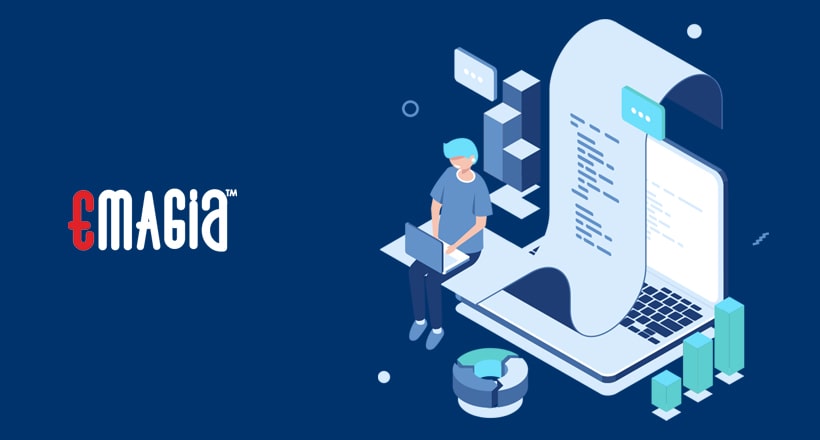Tedious and time-intensive manual Accounts Payable (AP) processes continue to contribute significantly to operational expenses. The finance department is acutely aware of the ongoing problem. More than ever, Chief Financial Officers (CFOs), Finance Vice Presidents, and Treasurers are increasingly recognizing the value of adopting AI tools to intelligently manage invoices.
Notably, recent studies indicate that 35% of invoices are still received in paper form. Moreover, the cost of rectifying errors in each invoice is estimated at $53.50, according to another study by Forrester.
Continuous enhancements in the quality of invoicing automation are expected to progressively reduce errors, thereby lowering processing costs. CFOs, cognizant of the impact of Accounts Payable on working capital management and operational cash flow, express particular concern about the efficiency and productivity of the AP process. In recent years, the finance and accounting landscape, including the critical Accounts Payables process, has undergone a transformation through the integration of Artificial Intelligence (AI) and Machine Learning (ML).
Here, we delve into the advantages that organizations can derive from the implementation of AI-powered automation in invoice processing as well as some of the the strategies for achieving ideal AI-enabled automation within the invoicing process.
Optical character recognition (ORC) is not a new solution per se. ORC drives automation in the invoicing process by reading and converting images of text – copies of handwritten, typed, or printed documents or images – into machine-readable and editable text formats. However, the traditional OCR technology has limitations including the following, resulting in poor performance in the invoicing process:
The quality of OCR output is highly dependent on the quality of input documents, meaning the quality of OCR output is relative to the quality of the OCR input.
Errors in a paper invoice resulting from traditional OCR use cost companies money and impact AP accounting.
The classic OCR tools are point solutions – solutions designed for a single task.
An advanced OCR designed for unstructured data processing by pairing OCR with AI technology helps finance teams manage the limitations of traditional OCR. An AI-enabled OCR leverages third-party or human-in-the-loop (HITL) supervision to faultlessly identify different types of invoices, extract applicable data and information from them, and input that information into an ERP or centralized system for further processing.
The following are key functions of AI-automated invoice processing:
Sorting Invoices:
In lieu of the manual scrutiny of vendor invoices within traditional Accounts Payable (AP) processes, Artificial Intelligence and Machine Learning (AI/ML) empower organizations to automatically discern the arrival of invoices. This involves cognitive analysis of attachment data, distinguishing between various documents such as invoices, credit memos, remittance advice, bank statements, and others. In instances where attachments accompany invoices, AI can adeptly identify and detach invoices or segregate multiple invoices.
Invoice OCR:
Invoices received in non-digital formats – Including paper, images, or PDFs – leverage optical character recognition (OCR) intelligently. The pattern recognition prowess of AI/ML models facilitates the identification of data from invoices, a critical task given the absence of standardized invoice forms from different vendors. OCR software powered by AI/ML is imperative for accurately identifying key details such as vendor name, invoice number, tax ID, gross amounts, payment terms, and more, irrespective of the format.
Data Extraction:
Traditional OCR tools are prone to errors, necessitating additional work. AI intervenes by automatically rectifying mistakes originating from the OCR engine. Extracted data undergoes validation before being entered and posted to the Enterprise Resource Planning (ERP) system or other business applications. The challenge of vendors sharing identical data points as identifiers is effectively addressed by AI, enabling correlation between invoice data and available AP system data. Recent research by PwC indicates that even rudimentary AI-based extraction techniques yield noteworthy time savings, typically ranging from 3040%.
Invoice Generation: The current invoicing landscape is predominantly manual or semi-automated in many companies. AI-enabled tools can seamlessly automate the process by intelligently inputting invoice details, including company information, tax details, profit and cost centers, discounts, gross and net amounts. Addressing a significant pain point for the AP team, particularly with non-purchase order (non-PO) invoices on the line-item level, AI employs machine learning (ML) to identify patterns and predict the correct invoice booking.
Approving Invoices: Leveraging information from invoices and accounting methodology, an intelligent approval flow is orchestrated. This involves automatic segmentation of invoices into multiple approver flows aligned with the approval matrix. Such automation significantly streamlines the approval process, reducing the time needed for multi-line invoice approvals by up to 50%.
Posting the Invoices: The automated AP invoicing process markedly reduces the posting time per invoice, expediting payment and bolstering customer satisfaction. Furthermore, the optimized posting process contributes to the creation of real-time dashboards, furnishing CFOs, responsible managers, and the finance department with enhanced insights for analysis, control, and visibility into the AP process and cash flow management.
Conclusion: The Future Focus: AI-powered invoice processing, ensuring precision and automation, stands poised to deliver substantial cost savings of up to 90% in the invoicing process. The AI platform’s capability to detect fraud, identifying manipulated, forged, and duplicated invoices, translates to significant time and cost savings for organizations. As CFOs concentrate on enhancing the efficiency of the AP process, the critical consideration revolves around identifying the most fitting Invoicing application for the organization. Furthermore, with governments moving towards stricter e-invoicing implementations, the selection of a future-proof AI-enabled solution and the establishment of a governance framework are paramount for efficiently managing the AP process.









